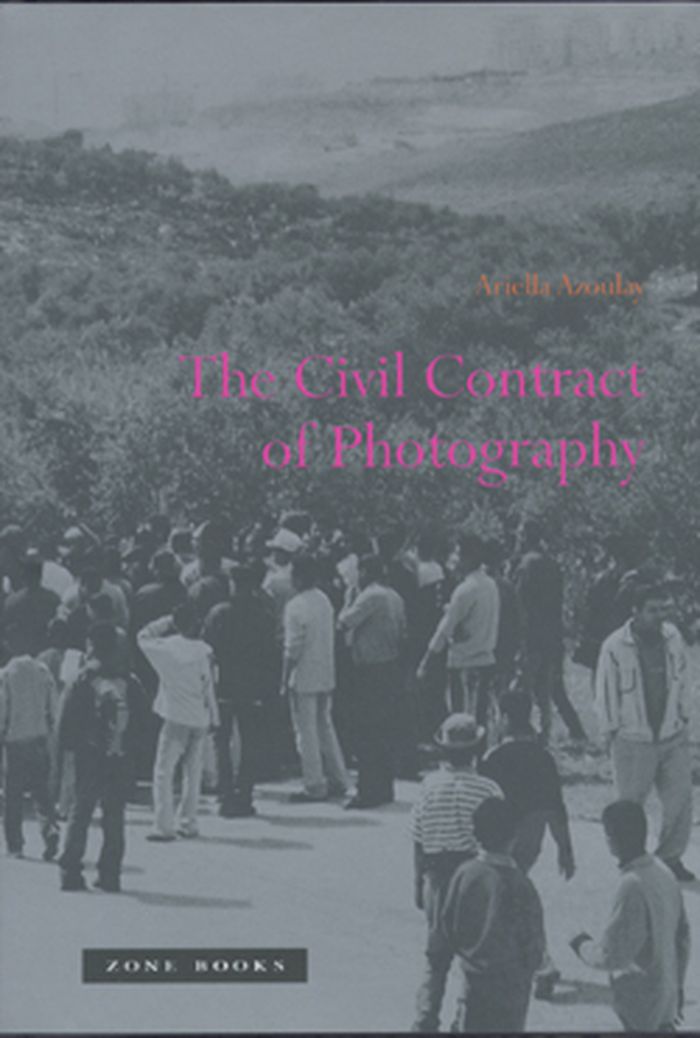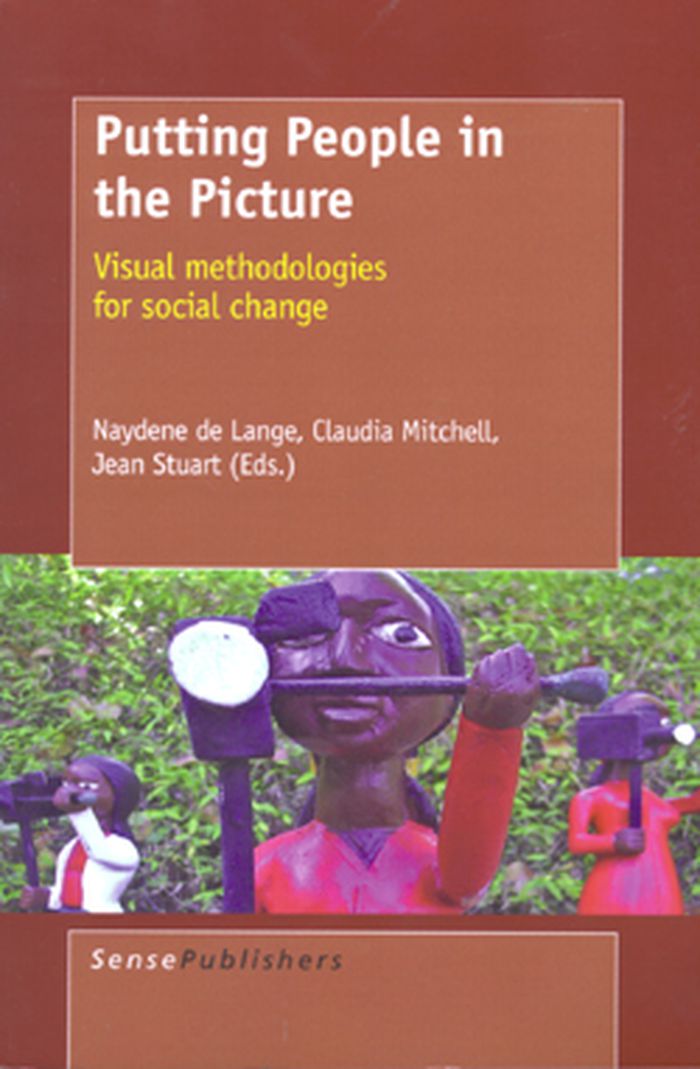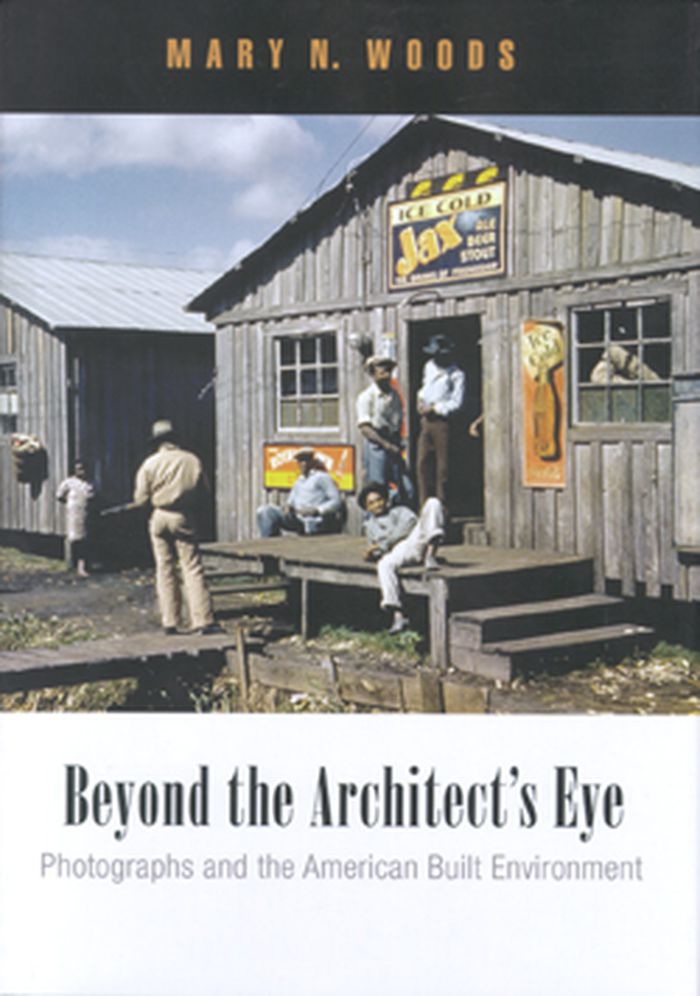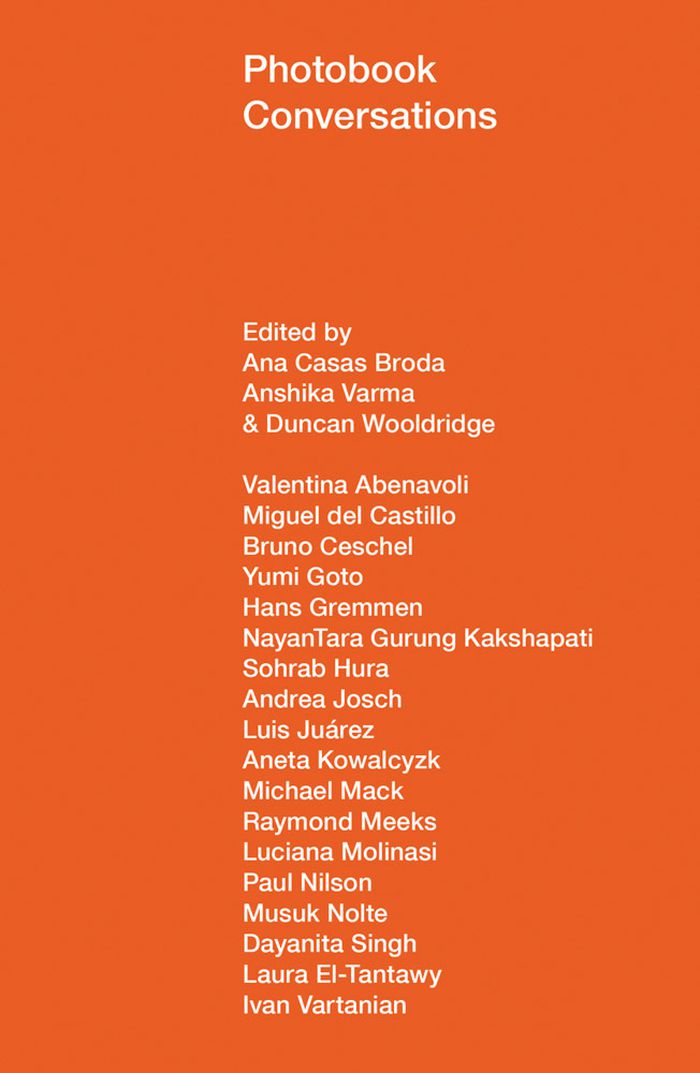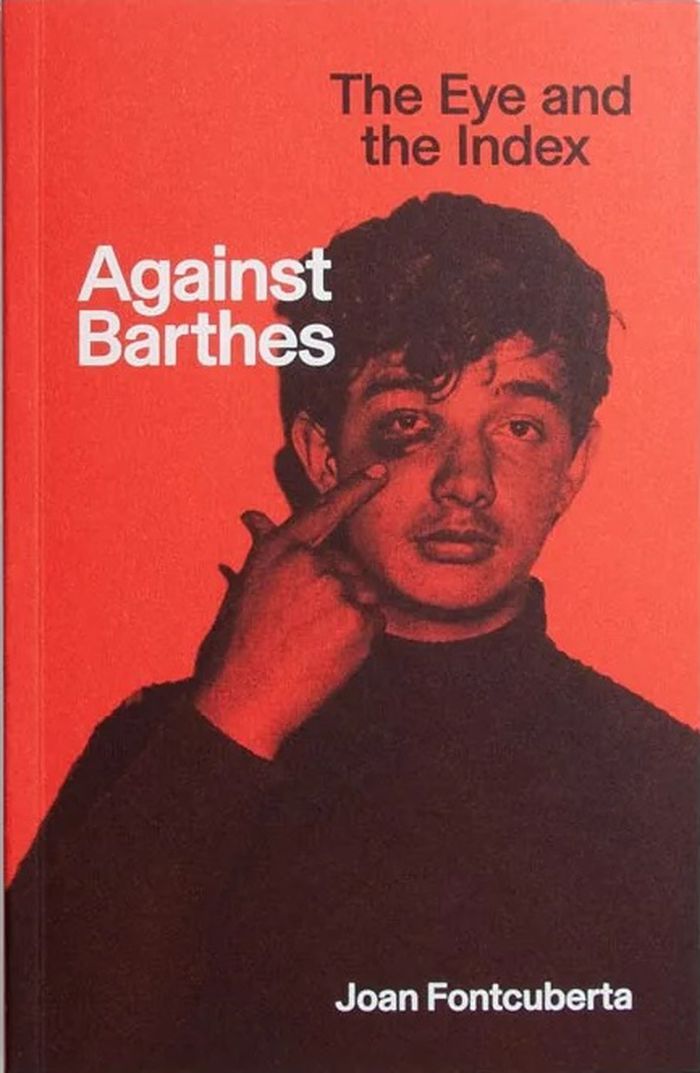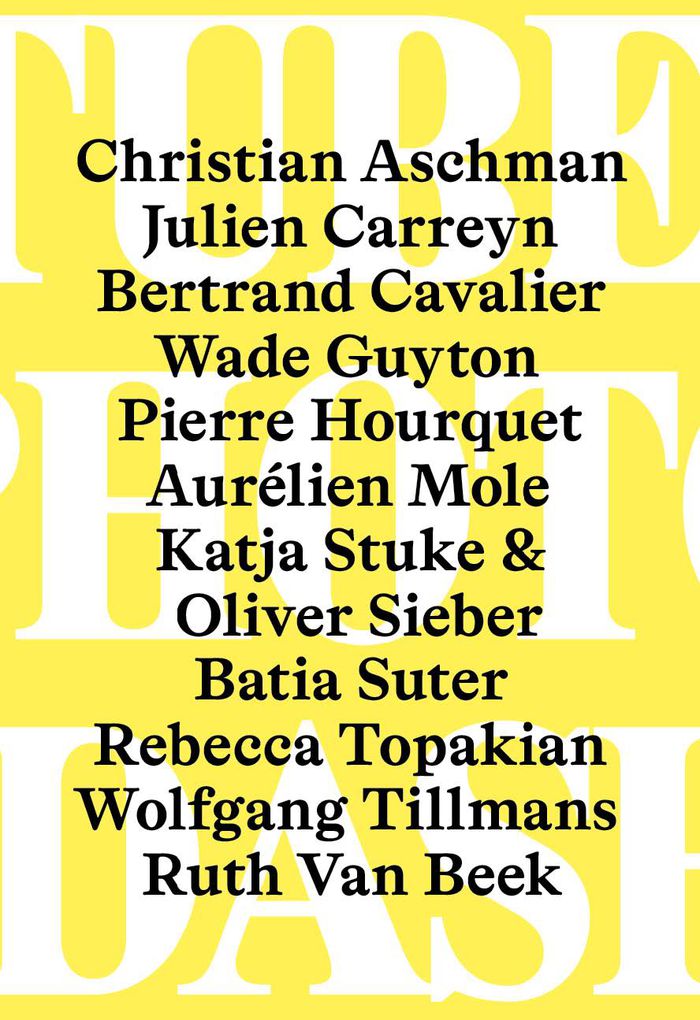$37.95
(disponible sur commande)
Résumé:
In this groundbreaking work, Ariella Azoulay provides a compelling rethinking of the political and ethical status of photography. In her extraordinary account of the “civil contract” of photography, she thoroughly revises our understanding of the power relations that sustain and make possible photographic meanings. Photography, she insists, must be thought and understood(...)
The civil contract of photography
Actions:
Prix:
$37.95
(disponible sur commande)
Résumé:
In this groundbreaking work, Ariella Azoulay provides a compelling rethinking of the political and ethical status of photography. In her extraordinary account of the “civil contract” of photography, she thoroughly revises our understanding of the power relations that sustain and make possible photographic meanings. Photography, she insists, must be thought and understood in its inseparability from the many catastrophes of recent history.
Théorie de la photographie
$52.00
(disponible sur commande)
Résumé:
Getting the picture, constructing (and deconstructing) the picture, finding the picture, viewing the picture, being in the picture , changing the pictures --these are all phrases that apply to the fascinating world of 'putting people in the picture' in visual research within the Social Sciences. Putting People in the Picture: Visual Methodologies for Social Change focuses(...)
Théorie de la photographie
mai 2008, Rotterdam
Putting people in the picture: visual methodologies for social change
Actions:
Prix:
$52.00
(disponible sur commande)
Résumé:
Getting the picture, constructing (and deconstructing) the picture, finding the picture, viewing the picture, being in the picture , changing the pictures --these are all phrases that apply to the fascinating world of 'putting people in the picture' in visual research within the Social Sciences. Putting People in the Picture: Visual Methodologies for Social Change focuses on the ways in which researchers, practitioners and activists are using such techniques as photo voice, collaborative video, drawings and other visual and arts-based tools as modes of inquiry, as modes of representation and as modes of disseminating findings in social research. The various chapters address methodological, analytical, interpretive, aesthetic, technical and ethical concerns in using visual methodologies in work with young people, teachers, community health care workers -- and even the self-as-researcher. The range of issues addressed in the work is broad, and includes work in the areas of HIV & AIDS, schooling, poverty, gender violence, race, and children's visions for the future. While the studies are situated within a variety of social contexts, the focus is primarily on work in Southern Africa. The book takes up some of the theoretical and practical challenges offered by Visual Sociology, Image- based Research, Media Studies, Rural Development, and Community-based and Participatory Research, and in so doing offers audiences an array of visual approaches to studying and bringing about social change.
Théorie de la photographie
$62.50
(disponible sur commande)
Résumé:
Typical architectural photography freezes buildings in an ideal moment and rarely captures what photographer Berenice Abbott called the medium's power to depict "how the past jostled the present." In Beyond the Architect's Eye, Mary N. Woods expands on this range of images through a rich analysis that commingles art, amateur, and documentary photography, genres usually(...)
Beyond the architect's eye: photographs and the american built environment
Actions:
Prix:
$62.50
(disponible sur commande)
Résumé:
Typical architectural photography freezes buildings in an ideal moment and rarely captures what photographer Berenice Abbott called the medium's power to depict "how the past jostled the present." In Beyond the Architect's Eye, Mary N. Woods expands on this range of images through a rich analysis that commingles art, amateur, and documentary photography, genres usually not considered architectural but that often take the built environment as their subject. Mary N. Woods is Professor of the History of Architecture and Urbanism at Cornell University. She is the author of From Craft to Profession: The Practice of Architecture in Nineteenth-Century America.
Théorie de la photographie
livres
$25.95
(disponible sur commande)
Résumé:
This publication features the photographic work of 5 New York-based artists : Thomas Holton, Bettina Johae, Reiner leist, Zoe leonard and Ethan Levitas. As a counterpoint to these works, Glenn Ligon offers the literal narrative of his own housing.
Eminent domain : contemporary photography and the city
Actions:
Prix:
$25.95
(disponible sur commande)
Résumé:
This publication features the photographic work of 5 New York-based artists : Thomas Holton, Bettina Johae, Reiner leist, Zoe leonard and Ethan Levitas. As a counterpoint to these works, Glenn Ligon offers the literal narrative of his own housing.
livres
mai 2008
Théorie de la photographie
Photobook conversations
$27.95
(disponible en magasin)
Résumé:
Published by acclaimed magazine 1000 Words, twice winner of Photography Magazine of the Year at the Lucie Awards, ''Photobook Conversations'' foregrounds discussions on a range of positions, practices and politics that shape contemporary photography and publishing. Editors Ana Casas Broda, Anshika Varma and Duncan Wooldridge provide the same set of questions to each(...)
Théorie de la photographie
juin 2025
Photobook conversations
Actions:
Prix:
$27.95
(disponible en magasin)
Résumé:
Published by acclaimed magazine 1000 Words, twice winner of Photography Magazine of the Year at the Lucie Awards, ''Photobook Conversations'' foregrounds discussions on a range of positions, practices and politics that shape contemporary photography and publishing. Editors Ana Casas Broda, Anshika Varma and Duncan Wooldridge provide the same set of questions to each interviewee, creating a kaleidoscope of responses. Among the organizations whose activities and ambitions are represented within this volume are MACK, Hydra + Fotografía, Offset Projects, Self Publish Be Happy, Goliga and the Nepal Picture Library. Speaking with hope and humility, the concerns expressed by those who work with the photobook form vary from approaches to editing and sequencing images to questions around the audience and market for photobooks and models for better ecosystems.
Théorie de la photographie
La photo me regardait
$52.95
(disponible sur commande)
Résumé:
D’œuvres d’art, Katja Petrowskaja entremêle souvenirs d’enfance, actualités, réflexions esthétiques, historiques ou sociologiques dans une écriture délicate. La photographie d’un mineur du Donbass, un couple de migrants syriens arrivés sur l’île de Lesbos, un autoportrait de Francesca Woodman, une fleur nouvelle à Tchernobyl ou un énigmatique pigeongramme : chaque fois(...)
La photo me regardait
Actions:
Prix:
$52.95
(disponible sur commande)
Résumé:
D’œuvres d’art, Katja Petrowskaja entremêle souvenirs d’enfance, actualités, réflexions esthétiques, historiques ou sociologiques dans une écriture délicate. La photographie d’un mineur du Donbass, un couple de migrants syriens arrivés sur l’île de Lesbos, un autoportrait de Francesca Woodman, une fleur nouvelle à Tchernobyl ou un énigmatique pigeongramme : chaque fois que l’on croit deviner le trajet d’une pensée ou d’un songe, l’autrice déplace notre regard de quelques centimètres à peine, et cela suffit à renverser notre imaginaire. Née en Ukraine, Katja Petrowskaja se met à écrire sur les photographies au début de l’invasion russe en 2014, « par impuissance face à la violence ». Dans une écriture parfaitement limpide, La photo me regardait porte une attention si minutieuse aux choses et aux images qu’elle en fait ressentir une lenteur inédite, opposant au bruit des guerres « des possibilités de silence et de beauté ». Ces textes, écrits entre 2014 et 2021, dessinent « les traits d’une autobiographie dispersée, en éclats » (Jean-Christophe Bailly).
Théorie de la photographie
$20.00
(disponible en magasin)
Résumé:
The gesture of pointing is the perfect embodiment of photography’s function as a visual document: an injunction to look at this. In this textual and visual essay, artist Joan Fontcuberta takes the index finger as his point of departure for an insightful and irreverent consideration of photography’s relation to indexicality. He refutes, as well as draws on, Roland(...)
Against Barthes: The eye and the index
Actions:
Prix:
$20.00
(disponible en magasin)
Résumé:
The gesture of pointing is the perfect embodiment of photography’s function as a visual document: an injunction to look at this. In this textual and visual essay, artist Joan Fontcuberta takes the index finger as his point of departure for an insightful and irreverent consideration of photography’s relation to indexicality. He refutes, as well as draws on, Roland Barthes’s suggestion that every photograph tells us ‘'this has been'’ (‘ça a été’), reckoning with the inconvenient multiplicity of thises in any given image. If a photograph constitutes such a statement – as made explicit in images that include a pointing finger – does the camera witness reality or performance? These existential issues are further complicated by the emergence of post-photography and generative AI. In this typically engaging and iconoclastic essay, Fontcuberta destabilises our ideas about the authority and authoriality of images, drawing on psychoanalysis, semiotics, and his own autobiography. His text is interleaved between two compelling visual essays formed of images from the archive of Mexican tabloid Alerta from the 1960s to 1980s, in which the pointing index finger forms a haunting and often humorous through-line.
Théorie de la photographie
TUBE.PHOTO.DASH
$34.95
(disponible en magasin)
Résumé:
Depuis 2023, Théophile Calot invite des artistes comme Julie Carreyn, Bertrand Cavalier, Wade Guyton, Batia Suter, Rebecca Topakian ou Wolfgang Tillmans au sein de la librairie delpire & co dans le cadre d'une programmation d'exposition tournée vers les notions de verticalité et horizontalité de l'image. Chaque exposition est en lien avec un ou plusieurs livres, et la(...)
Théorie de la photographie
juillet 2025
TUBE.PHOTO.DASH
Actions:
Prix:
$34.95
(disponible en magasin)
Résumé:
Depuis 2023, Théophile Calot invite des artistes comme Julie Carreyn, Bertrand Cavalier, Wade Guyton, Batia Suter, Rebecca Topakian ou Wolfgang Tillmans au sein de la librairie delpire & co dans le cadre d'une programmation d'exposition tournée vers les notions de verticalité et horizontalité de l'image. Chaque exposition est en lien avec un ou plusieurs livres, et la notion de publication et s'empare des murs, des tables, des tiroirs et de la façade du 13, rue de l'Abbaye. Toutes les œuvres présentées dans l'exposition « TUBE.PHOTO.DASH » sont reproduites dans la publication à l'horizontale, à l'échelle 1:1. L'image est donc à la taille réelle de l'œuvre. De ce fait, nombreuses d'entre elles sont tronquées sur un détail. L'exposition est documentée dans son intégralité, œuvre par œuvre, dans l'ordre conseillé de la visite. Les prises de vues ont été réalisées le 14 mai 2025, à la veille du vernissage, et ne montrent qu'une certaine réalité. En effet, pendant les cinq mois d'exposition, certaines œuvres vont évoluer, se dégrader ou disparaître. 7,5 x 11 cm
Théorie de la photographie
livres
$37.50
(disponible sur commande)
Résumé:
One hundred photographs from the Mariners' Museum in Newport News, Virginia, selected and introduced by John Szarkowski with essays by Richard Benson.
Théorie de la photographie
octobre 1999, New Haven
A maritime album: 100 photographs and their stories
Actions:
Prix:
$37.50
(disponible sur commande)
Résumé:
One hundred photographs from the Mariners' Museum in Newport News, Virginia, selected and introduced by John Szarkowski with essays by Richard Benson.
livres
octobre 1999, New Haven
Théorie de la photographie
livres
$45.00
(disponible sur commande)
Résumé:
Through photographs, paintings, sculpture, installations, architectural drawings and plans, videos, and film excerpts, this book examines the ways in which the Bronx has been constructed in the public imagination. More than 40 artists are represented including Sophie Calle, Maya Lin, Gordon Matta-Clark, Aldo Rossi, and Camilo Vergara.
Urban mythologies : the Bronx represented since the 1960s
Actions:
Prix:
$45.00
(disponible sur commande)
Résumé:
Through photographs, paintings, sculpture, installations, architectural drawings and plans, videos, and film excerpts, this book examines the ways in which the Bronx has been constructed in the public imagination. More than 40 artists are represented including Sophie Calle, Maya Lin, Gordon Matta-Clark, Aldo Rossi, and Camilo Vergara.
livres
août 1999, New York
Théorie de la photographie
